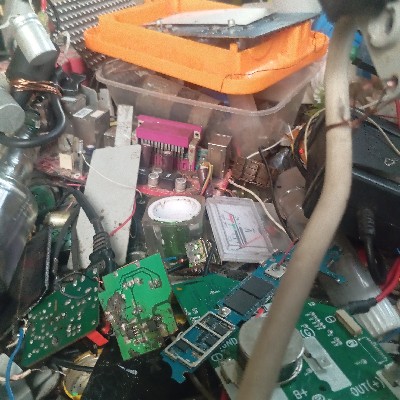


Precio de CommunisCOM
¿Qué opinas hoy de Communis?
Acerca de Communis (COM)
Sure, let me do it.
Introducción a Communis Token
El mundo de las criptomonedas ha revolucionado la forma en que percibimos, adquirimos y manejamos el dinero. Entre las opciones que emergen en el horizonte de este mundo digitalizado, está Communis Token.
¿Qué es Communis Token?
Communis Token es una moneda digital que ha captado la atención de muchos inversores por su propuesta única: ser una moneda digital segura, descentralizada y eficiente, con el objetivo de impulsar una nueva economía digital.
Características Principales de Communis Token
Descentralización
Al igual que Bitcoin y otras criptomonedas, Communis Token opera en una red descentralizada. Esta es una de sus características más importantes, ya que elimina la necesidad de intermediarios y potencialmente reduce las tarifas y los tiempos de transacción.
Eficiencia
Otra característica que destaca de Communis Token es su eficiencia. A través de su tecnología blockchain, permite transacciones rápidas, seguras y eficientes.
Seguridad
La seguridad es una preocupación crítica en el mundo de las criptomonedas. En este sentido, Communis Token se destaca por su sistema robusto de seguridad que garantiza la integridad y confidencialidad de las transacciones.
La Significación Histórica
El surgimiento de las criptomonedas como Communis Token representa un hito importante en la historia financiera. Las criptomonedas ofrecen una alternativa a las monedas fiat tradicionales y abren la puerta a una nueva era de comercio digitalizado. La importancia de Communis Token radica en su propuesta de valor de ofrecer una criptomoneda segura, eficiente y descentralizada.
Las criptomonedas son más que una tendencia pasajera o un medio para hacer transacciones en línea. Representan un cambio profundo en la manera en que pensamos sobre el valor, la confianza y la descentralización.
En resumen, Communis Token es un ejemplo de cómo las criptomonedas pueden proporcionar soluciones innovadoras en la economía digital. Nos recuerda que el mundo de las criptomonedas es vasto y lleno de posibilidades.
Conclusión
Communis Token puede ser una opción atractiva para los inversores que buscan diversificar su cartera con criptomonedas. Tiene características que lo hacen destacar en el amplio mercado de las criptomonedas, como su seguridad, eficiencia y descentralización. Como siempre, es crucial hacer un estudio a fondo antes de invertir en cualquier criptomoneda.
AI analysis report on Communis
Precio actual de Communis en EUR
Historial del precio de Communis (EUR)
 Precio más bajo
Precio más bajo Precio más alto
Precio más alto 
¿Cuál es el precio más alto de Communis?
¿Cuál es el precio más bajo de Communis?
Predicción de precios de Communis
¿Cuándo es un buen momento para comprar COM? ¿Debo comprar o vender COM ahora?
¿Cuál será el precio de COM en 2026?
¿Cuál será el precio de COM en 2031?
Preguntas frecuentes
¿Cuál es el precio actual de Communis?
¿Cuál es el volumen de trading de 24 horas de Communis?
¿Cuál es el máximo histórico de Communis?
¿Puedo comprar Communis en Bitget?
¿Puedo obtener un ingreso estable invirtiendo en Communis?
¿Dónde puedo comprar Communis con la comisión más baja?
Holdings por concentración de Communis
Communis direcciones por tiempo en holding

Precios mundiales de Communis
- 1
- 2
- 3
- 4
- 5
Nuevos listados en Bitget
Comprar más
¿Dónde puedo comprar cripto?
Sección de video: verificación rápida, trading rápido

Recursos de COM
Etiquetas:
Clasificación de Communis
Bitget Insights





Activos relacionados
Additional info on Communis
Resumen de la moneda
Relacionado con la moneda
Relacionado con el trading
Actualizaciones de la moneda

































